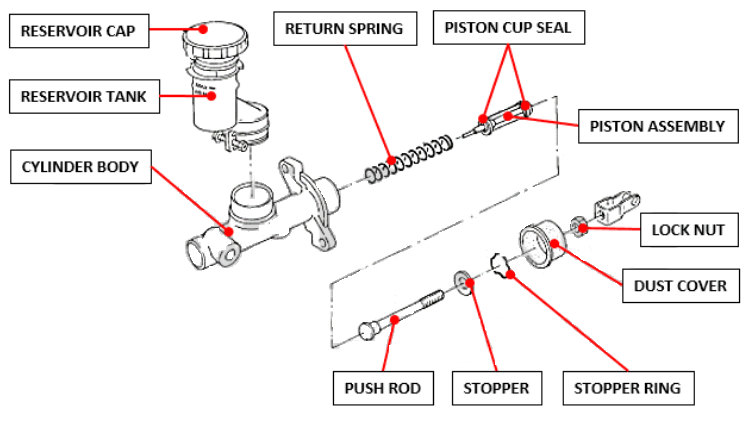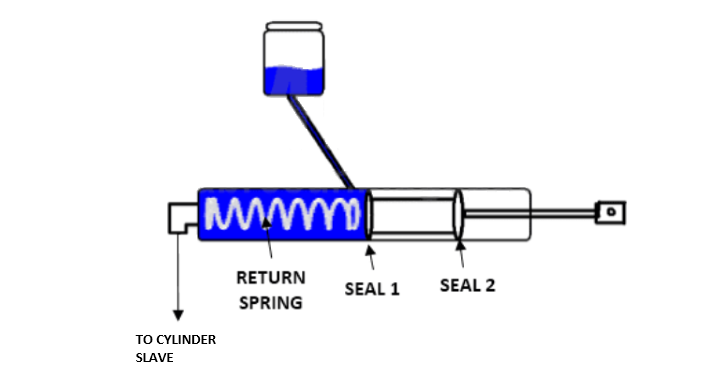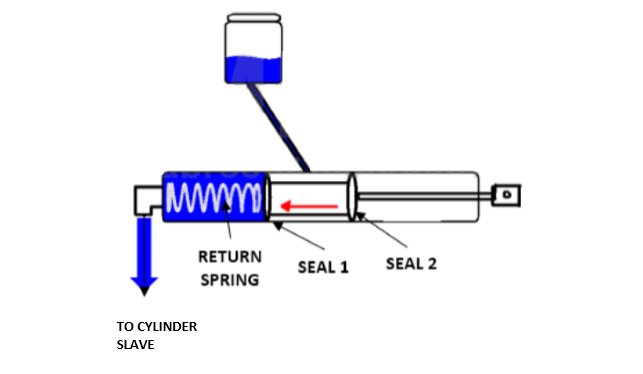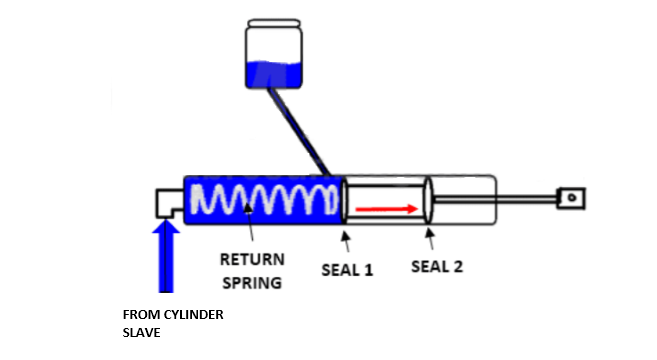How does a clutch master cylinder work?
The clutch master cylinder is one of the important components in the clutch hydraulic system. It functions to change the clutch pedal's mechanical motion to the clutch oil's hydraulic pressure. Yes, the clutch master cylinder will create hydraulic pressure to press the clutch plate and free engine rotation to facilitate gear shifting.
This article will share information about how the clutch master cylinder works when the clutch pedal has not been repressed, when it is pressed, and released. We also added some illustration images to clarify the conditions that are happening in this clutch master cylinder.
However, before discussing how the clutch master cylinder works, we need to know the components inside the clutch master cylinder and what they do? Following are the components on the clutch master cylinder
- The reservoir cap functions to prevent the oil from spilling when the car runs and avoid dirt from outside entering the reservoir tank.
- The reservoir tank functions as a place/container to accommodate clutch oil.
- The cylinder body creates pressure on the oil and a home for other clutch master cylinder components.
- The return spring functions to push the piston back to its original position when the clutch pedal is not depressed
- The piston cup seal prevents leakage in the clutch master cylinder so that the clutch oil can be pressed and generate hydraulic pressure.
- The piston assembly serves as a place for the piston seal and return spring. This component functions as a continuation of the push from the pushrod to press the clutch oil.
- The push rod functions to transmit power and pressure from the clutch pedal. Also, it functions as an adjustable part to adjust free play on the clutch pedal.
- The stopper and stopper ring function to prevent the components in the clutch master cylinder from being released.
- Dust cover serves to protect the components in the clutch master cylinder from dirt and dust.
- The lock-nut function is to lock the pushrod. It puts the pushrod in a fixed position.
Pay attention to the image below, which will show the components of the car clutch master cylinder.
After we know what the components are in the clutch master cylinder, here's how the clutch master cylinder works when the clutch pedal is pressed and when the clutch pedal is released
When the clutch pedal has not been pressed
Pay attention to the image below, which will illustrate the clutch master cylinder's conditions when the clutch pedal has not been pressed.
In the picture above, we can see that the reservoir tank channel is still open so that the clutch oil fills the entire chamber of the clutch master cylinder, which is right in front of seal 1. The clutch pedal has not been pressed, so there is no hydraulic pressure generated from the clutch oil.
When the clutch pedal is depressed
Pay attention to the image below, which will describe the clutch master cylinder's conditions when the clutch pedal is depressed.
When the clutch pedal is pressed, the pushrod will move to the left to push the piston assembly. Simultaneously, the return spring will also be depressed so that the piston assembly, seals 1 and 2, will move entirely to the left.
When the piston assembly is pushed, seal 1 will also move towards the left and press the clutch oil. When seal 1 has not passed the channel from the reservoir tank, the hydraulic pressure created is not too strong.
When the channel hole of the reservoir tank is passed by seal 1, the clutch oil will solidify so that hydraulic pressure will arise in the clutch oil. The pressure will channel to the lower clutch master.
Seal 2 is used to prevent clutch oil leakage from the reservoir drain. The oil will fill the center of the piston assembly that comes from the reservoir tank.
That way, seal 1 functions as the primary hydraulic pressure generator to press the lower clutch master, while seal 2 serves to prevent clutch oil leakage from the reservoir tank.
Also read:
When the clutch pedal is released
Pay attention to the image below, which will illustrate the clutch master cylinder's conditions when the clutch pedal is released.
When the clutch pedal is released, the return spring will push back the piston assembly along with seals 1 and 2 to return to its position (move back to the right). The clutch oil vacuum occurs so that seals will draw the clutch oil from the lower master back into the clutch master cylinder.
Simultaneously, the reservoir tank drain will open again, and the clutch oil from the reservoir tank will also flow to fill the space in the master cylinder body. That way, the clutch oil is always in full condition and ready to be pressed again to create hydraulic pressure.




